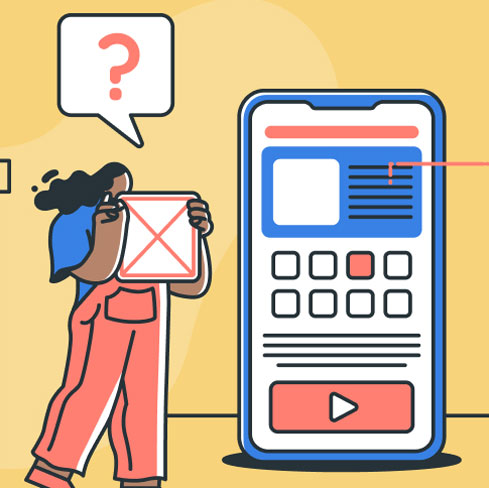Crafting Inclusive Customer Personas
February 9, 2023 | Read Time : 3 mins
Table of Contents
What is an Inclusive Customer Persona?
A design that is usable and allows the maximum number of individuals to use the product is described as inclusive and ultimately successful. Users that use a product or service from a wide range of perspectives will naturally be diverse and individualistic.
The ultimate objective of inclusive design should be to encourage participation and collect a wide range of human experiences. This can be accomplished by taking into account various communities, groups, and minorities while identifying exclusion points and considering potential solutions.
Let’s find out ways in which we can create an inclusive persona:
Analyze and Consider Your Constraints
Your persona should be shaped by the same target audiences that you would typically consider, taking notice of the challenges that came through, and by specific sets of users with difficulties.
When making with constraints in mind, individuals develop possibilities that may benefit more users than they initially thought. By defining constraints, the persona spectrum helps in its realisation.
Focus on Belonging: Inclusion + Equity + Diversity
For instance, many companies think that designing for accessibility is the ideal solution. Although accessibility is a must, achieving it alone is insufficient.
Aim Higher. Think (B)long(I)n(G). Belonging is the sweet spot where inclusion, equity and diversity come together.
Make sure the long-term, short-term, and situational events are taken into account through the broad lens of belonging, extending beyond just accessibility/physical constraints, while reevaluating the challenges generated in Step 1.
Discover and Leverage Functional Personas
A company should begin with inclusive personas to provide a comprehensive, all-encompassing perspective and/or go in-depth with functional persona/archetypes to address certain needs. Each persona serves a different purpose; thus, one does not exclude the other.
Leverage any functional persona that already exists to verify your hypotheses, validate your assumptions, and gain more assurance in the inclusive personas you are creating.

Principles of inclusive design and how companies use them
Web designers must eliminate preconceptions, and preconceived beliefs, and prioritise the average user over the benefit of all users in order for inclusive design to succeed. To do this, designers must adhere to the following principles:
Flexibility
In terms of web design, there is no such thing as one size fits all. It doesn’t mean you have to create separate websites or landing pages for each user. But, it does include providing additional features to the UI when you feel they will assist reduce the gap between different users’ experiences.
Simplicity
Minimalism is a widely used web design style for good reason. It’s not only because it results in more aesthetically appealing interfaces; minimalism and simplicity pave the path for more intuitive design.
Consistency
Consistency does not imply that a website should become predictable or dull. You may still be creative while remaining consistent.
Perception
Designers must take into account users’ preferences while creating websites in addition to how people interact with them. For example, a website dominated by pictures may be hard to understand for people who are not visual learners.
Equity
Equitable results are known as equity in web design. In other words, no matter who the user is, he or she should be able to execute tasks with ease.
Prevention
Human error will be reduced via inclusive design. This involves designing a user interface to avoid as many errors as possible while simultaneously responding to errors in a patient and friendly way. An inclusive design does more to develop trust with users by eliminating the frustration or guilt associated with making errors.
Inclusive design
Due to their classification as “places of public accommodation,” websites are subject to accessibility lawsuits in the same manner that brick-and-mortar companies are. In addition to ensuring that everyone can read, browse, and interact with a website, inclusive design provides users with a certain level of comfort.
The term “inclusive web design” encompasses a wide range of specialties, including UX design, accessible design, and responsive design. Yet inclusive design goes a step farther to guarantee that the final product is a widely used and well-liked website.






